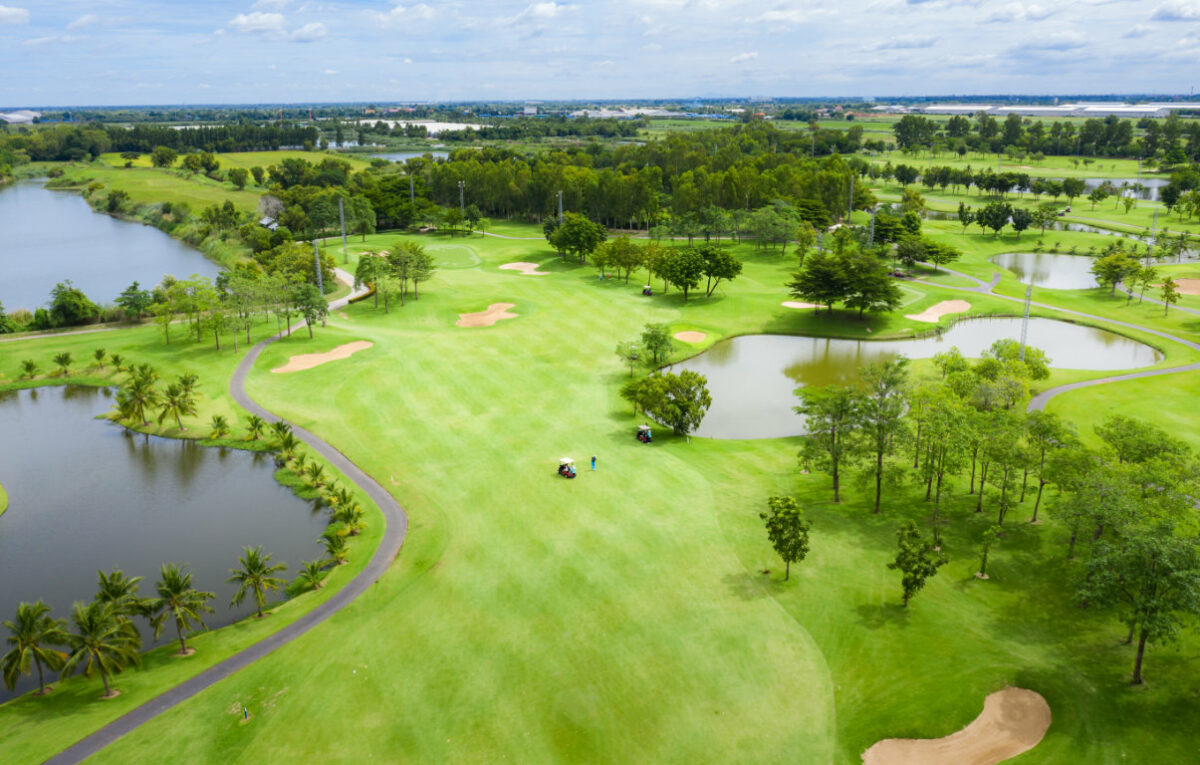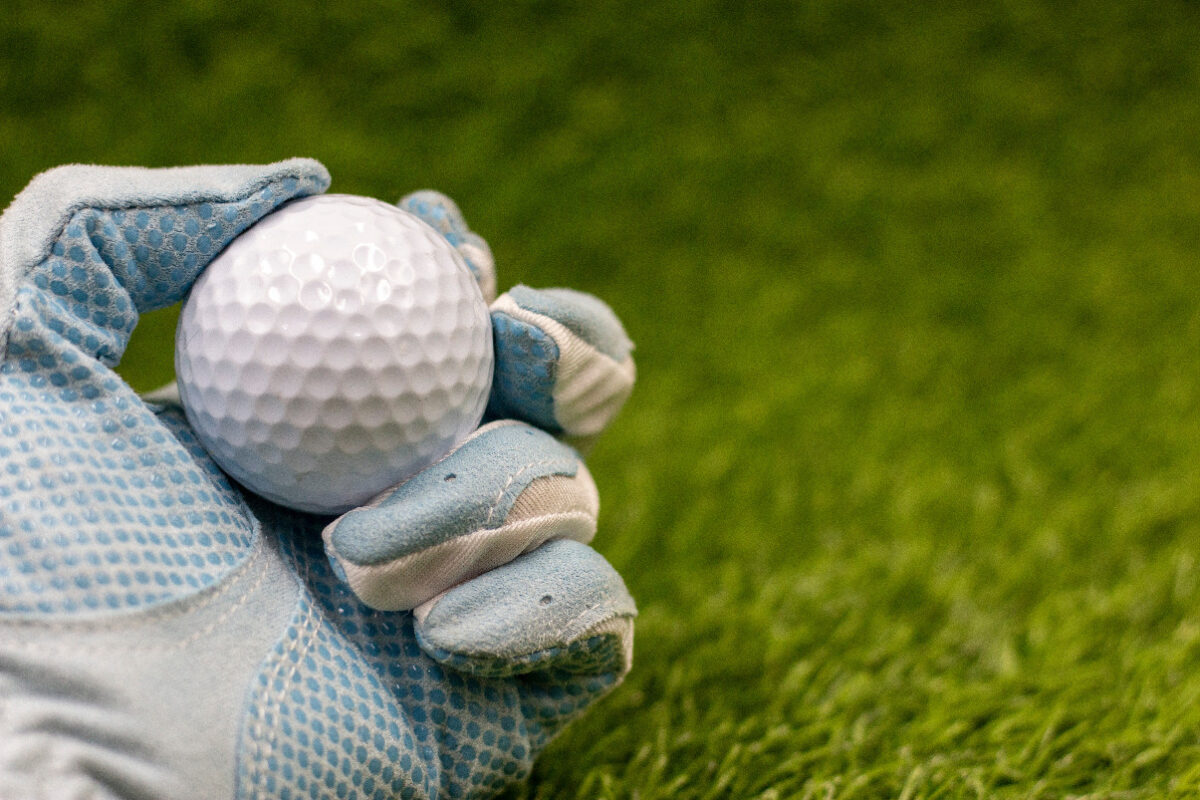What is a Lake Ball in Golf? Pros And Cons
Many golf courses feature scenic lakes, ponds, and other water hazards that gobble up countless golf balls each year.
This leads to an interesting niche in the golf industry – the harvesting, processing, and sale of so-called “lake balls” fished out of these water hazards.
In this guide, I’ll explain precisely what lake balls are, how they are recovered and prepared for reuse, grading systems to classify their condition, where to purchase them, and most importantly, guidance on when lake balls offer good value versus not worth the discount. Let’s delve into the murky, mucky world of lake balls.

Defining Lake Balls
The term lake balls refers to used golf balls retrieved from water hazards and ponds on golf courses and reprocessed for resale.
Lake balls come primarily from two sources:
- Balls hit into water hazards during regular play.
- Balls hit from driving ranges ending up in adjacent ponds.
Given the enormous number of golf balls landing in the water each year, recovering and reselling represents a thriving niche market. But how are all those balls plucked from the depths?
How Are Lake Balls Recovered?
Several methods exist for recovering lake balls, including:
- Scuba divers will hand-collect balls from small pond beds.
- Specialized scoopers are used in waist-deep water.
- Floating booms with collection nets trap balls near pond edges.
- For especially deep hazards, sonar mapping and underwater robots locate and vacuum up balls.
The most lucrative course ponds are dredged extensively each year to maximize the number of lost balls recovered.
How are Lake Balls Prepared for Resale?
Once recovered from the water, lake balls undergo a rigorous cleaning and processing regimen including:
- Cleaning – Balls are thoroughly scrubbed and washed to remove mud, debris, and algae.
- Sorting – Now clean, balls are sorted by original brand and model.
- Condition Grading – Each ball is visually inspected and graded based on its condition. More on grades shortly.
- Refinishing – Many used balls receive a fresh glossy coat of paint or finish.
- Packaging – After processing, balls are packaged in recycled sleeves and dozen containers for retail sale.
This extensive preparation produces recycled balls ready for a second life on the course at discounted pricing.
Lake Ball Condition Grading System
Not all recovered lake balls are equal when it comes to remaining quality and performance. Each ball is assigned a grade letter based on its visual appearance:
- Grade A (Excellent) – Collector-grade condition with a nearly flawless look still retaining brand-new quality and performance. These are extremely rare.
- Grade B (Good) – Normal use marks but retains high optical quality. Nearly indistinguishable from new except upon very close inspection. Still offers like-new performance.
- Grade C (Average) – Light surface scuffs or blemishes but no cuts or deep defects. Optical imperfections but full playability.
- Grade D (Fair) – Scuffs, discoloration, and surface defects are apparent. Optically sub-par but usable for casual play.
Recycled (Poor) – Excess cover cuts, gashes, and severe defects. Optically well below average. Sold as used practice balls only.
Understanding these grade criteria helps set proper expectations when purchasing recycled lake balls.
Where to Buy Lake Balls
Many large retailers sell popular lake ball brands:
- Big Box Stores – Walmart, Dick’s, and Target offer value packs from LostGolfBalls, Maxfli, Noodle.
- Golf Specialty Stores – Golf Galaxy, PGA Tour Superstore sells lake balls from Cut, Vice, TaylorMade.
- Driving Ranges – Many ranges supplement their rental balls with discount lake balls in the $5-10/dozen range.
- Online – eBay, Amazon, and discount sites like RockBottomGolf sell new, used, and recycled balls.
Checking multiple sellers lets you price shop and leverage competition for the best deals.

When Lake Balls Offer Good Value
Under certain circumstances, lake balls can represent solid savings over new balls:
- You’re a high handicapper needing lots of balls for penalty strokes.
- Playing an extremely difficult course demanding lots of lost balls.
- Balancing your budget between rounds played and equipment costs.
- Don’t mind occasional cosmetic blemishes if most balls look and feel new.
- Primarily using balls for chipping, pitching, and putting practice.
- Willing to accept more variability in flight performance.
For the golfer prioritizing quantity and minimizing lost ball costs over perfection, lake balls deliver.
When Lake Balls Fall Short
However, lake balls do come with some inherent drawbacks and risks vs. new balls:
- You never know the exact original condition before submersion, even Grade A balls.
- Refinished coatings can alter aerodynamics compared to new ones.
- Imperfections potentially accelerate wear and shorten useful life.
- Newer, advanced models with complex constructions may lack durability.
- Manufacturer warranties are void on reused balls.
- Testing and inspecting large quantities takes effort and diligence.
If you want reliable, consistent new ball performance and Features, lake balls pose challenges.
Maximizing Value Purchasing Lake Balls
To gain the most savings purchasing lake balls, follow these best practices:
- Stick with reputable, high-volume processors like LostGolfBalls who refinish and grade thoroughly.
- Search carefully for closeout deals from major brands phasing out older models.
- Focus purchases on simpler 2-piece ionomer cover balls which withstand refurbishing well.
- Use lake balls for practice sessions rather than relying on playing performance.
- Assess ball flight consistency yourself rather than trusting grades fully.
While not right for every golfer, buying lake balls selectively does provide opportunities to reduce costs.
The Takeaway on Lake Balls
In closing, lake balls offer a viable method for recreational, high handicap, and budget-minded golfers to reduce expenses on an inevitable supply cost – lost golf balls.
Just approach lake balls understanding their inherent limitations compared to new models.
If you establish proper expectations on variability and are diligent in inspecting condition at purchase, incorporating some discounted lake balls into your golf bag can deliver excellent savings.
Understand the trade-offs and target lake ball purchases carefully to maximize value while minimizing performance compromises.
